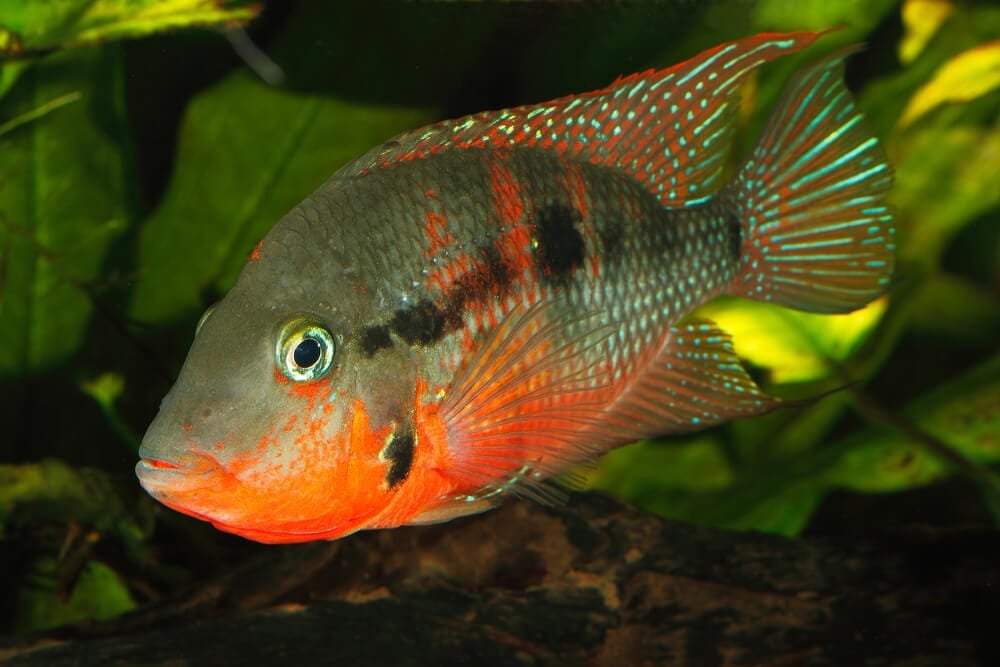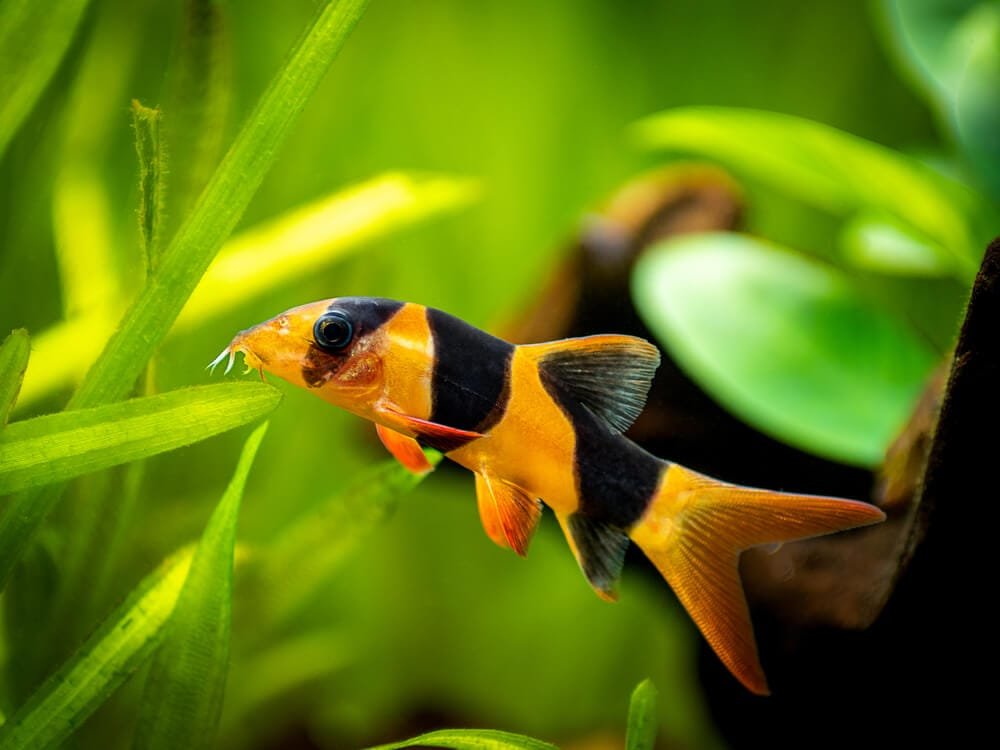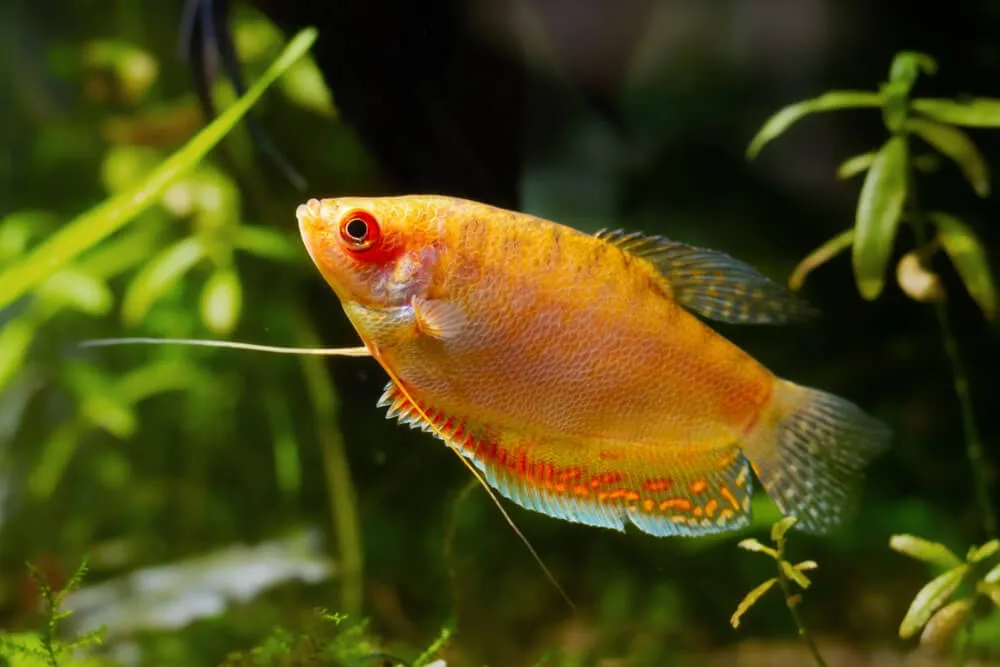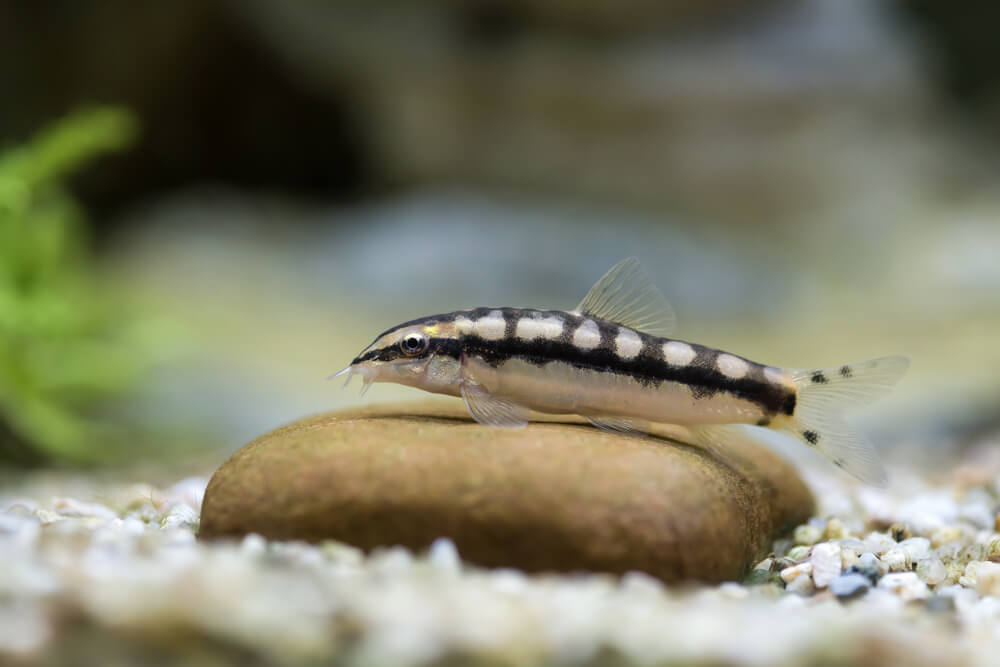Firemouth Cichlid Care 101: Habitat, Feeding and Tankmates

Have you ever heard of the Firemouth Cichlid? This stunning fish, scientifically known as Thorichthys meeki, is a popular choice for aquarium enthusiasts due to its vibrant colors and intriguing behavior. Originating from Central America, the Firemouth Cichlid is recognized for its distinct fiery-red throat, which it displays during territorial disputes or courtship rituals.
With its unique appearance and lively personality, this fish is sure to add a burst of life to any aquarium. Let’s explore more fascinating facts about the Firemouth Cichlid and why it has become a beloved addition to many aquatic environments.
Physical Characteristics
Size
Firemouth Cichlids are known for their moderate size, typically reaching about 4-6 inches in length when fully grown. This makes them a suitable choice for a medium-sized aquarium.
Coloration
One of the most striking features of Firemouth Cichlids is their vibrant coloration. They have a reddish-orange throat and belly, which extends towards their tail. The rest of their body is typically greenish-brown or gray, with vertical black stripes. During their breeding season, male Firemouth Cichlids develop bright red coloring on their gill covers and lower jaw, adding to their overall beauty.
Distinctive Features
Apart from their unique coloration, Firemouth Cichlids also have some distinctive physical features. They have a slightly elongated body shape with a relatively small head. Their dorsal fin, which runs along their back, is longer and more pronounced in males. Additionally, they possess a characteristic black dot located near their gill cover, often referred to as an “eyespot.”
Natural Habitat
Origin
Firemouth Cichlids are native to the warm, freshwater rivers and lakes of Central America, particularly Mexico, Belize, and Guatemala. They are found in various water bodies, including slow-moving rivers, streams, and even stagnant ponds.
Preferred Environment
In their natural habitat, Firemouth Cichlids inhabit areas with sandy or rocky substrates, along with plenty of hiding spots provided by rocks, driftwood, or vegetation. These cichlids are generally found in areas with dense vegetation, as it provides them with shelter and helps them establish territories.
Behavior in the Wild
Firemouth Cichlids are known for their territorial behavior. Males, in particular, can be quite aggressive and territorial during the breeding season. They will fiercely defend their chosen nesting site and may even engage in aggressive displays towards other males or intruders in their territory. However, outside of the breeding season, Firemouth Cichlids are generally peaceful and can coexist with other tankmates.
Aquarium Care
Tank Size and Setup
To provide a comfortable living space for Firemouth Cichlids, it is recommended to have a tank size of at least 30 gallons. This will allow them ample space to swim and establish territories. It is important to provide plenty of hiding spots and caves in the tank using rocks, driftwood, or aquarium decorations. Live plants can also be included, but sturdy ones should be chosen as these cichlids may rearrange or uproot them.
Water Parameters
Firemouth Cichlids thrive in water that is mildly acidic to neutral, with a pH range of 6.5-7.5. The water temperature should be maintained at around 76-82°F (24-28°C). It is crucial to regularly test and monitor the ammonia, nitrite, and nitrate levels in the tank, as these cichlids are sensitive to water quality. A good filtration system, along with regular water changes, is essential to maintain optimal water conditions.
Feeding
Firemouth Cichlids are omnivorous and have a diverse diet in the wild. In the aquarium, they can be fed a varied diet consisting of high-quality dry pellets, flakes, and freeze-dried or frozen foods such as bloodworms, brine shrimp, and daphnia. It is recommended to provide a balanced diet with a mixture of dry and live/frozen foods to ensure they receive all the necessary nutrients.
Tank Mates
While Firemouth Cichlids may display aggression towards their own species or similar-looking cichlids, they can generally coexist with other peaceful, similarly sized species in a community tank. Good tank mates can include peaceful tetras, catfish, plecos, and other non-aggressive Central American cichlids. It is important to avoid housing them with highly aggressive or fin-nipping species, as this can lead to stress and health issues.
Breeding
Breeding Firemouth Cichlids can be a fascinating experience. During the breeding season, males will select a suitable spot and prepare a nest using their mouths. Once a pair has formed, the female will lay her eggs on a flat surface near the nest, while the male fertilizes them. Both parents will then guard the eggs and later the fry, which hatch in a few days. It is important to provide appropriate breeding conditions, such as suitable tank decor and a separate breeding tank if necessary, to encourage successful breeding.
Health and Disease
Common Health Issues
Firemouth Cichlids are generally hardy fish, but they can still be susceptible to various health issues. Some common health problems for these cichlids include ich (white spot disease), fin rot, and fungal infections.
Preventive Measures
To prevent health issues, it is crucial to maintain good water quality by regularly testing the parameters and performing necessary water changes. Providing a balanced diet and ensuring a clean and stress-free environment also contribute to the overall health and well-being of Firemouth Cichlids. It is advisable to quarantine any new fish before introducing them to the main tank to prevent the spread of diseases.
Treatment Options
When facing health issues, it is important to promptly address them to prevent further complications. For common ailments like ich or fin rot, treatment options can include medications designed specifically for freshwater fish. However, it is recommended to consult with a qualified veterinarian or fish expert to accurately diagnose the issue and determine the appropriate treatment method.
Pros and Cons of Keeping Firemouth Cichlids
Benefits of Keeping Firemouth Cichlids
Keeping Firemouth Cichlids can be a rewarding experience for many reasons. These cichlids have vibrant colors and unique features, making them a visually appealing addition to any aquarium. They are relatively hardy and can adapt well to different water conditions. Additionally, their territorial behavior, especially during breeding, can provide an interesting and engaging spectacle to observe.
Challenges of Keeping Firemouth Cichlids
One of the main challenges of keeping Firemouth Cichlids is their territorial and potentially aggressive nature, particularly during the breeding season. This can create difficulties when selecting tankmates and maintaining harmony in a community tank. Additionally, their size and territorial behavior may require a larger tank and careful consideration of the tank layout and decor.
Conclusion
Firemouth Cichlids are a captivating species that can add beauty and personality to any aquarium. With their vibrant coloration, unique features, and intriguing behavior, they are sure to be a delightful addition for any fishkeeping enthusiast. By providing a suitable environment, appropriate tankmates, and proper care, you can ensure the health and well-being of these stunning cichlids. So, go ahead and consider bringing some fiery charm into your aquatic world with Firemouth Cichlids!






